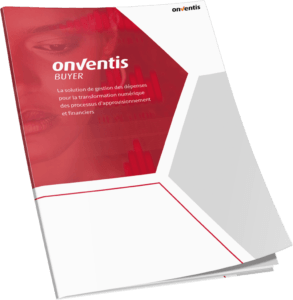Implementing sustainable supply chains: How digital supplier management systems support the achievement of sustainability goals
We will delve into the role of digital systems in supplier management and how they can assist companies in achieving and maintaining sustainable supply chains. Find out our valuable insights and practical tips on leveraging digital solutions for sustainable procurement practices.

It isn’t the first time we’ve emphasized the importance of achieving sustainable supply chains by considering ecological, social, and economic factors in procurement decisions. A sustainable supply chain brings various benefits such as enhanced reputation, customer loyalty, fair working conditions, environmental responsibility, risk mitigation, cost optimization, and resilience. We will delve into the role of digital systems in supplier management and how they can assist companies in achieving and maintaining sustainable supply chains. Find out our valuable insights and practical tips on leveraging digital solutions for sustainable procurement practices.
Sustainability in supply chains with digital supplier management
A systematic and comprehensive approach is crucial to successfully incorporate sustainability into supplier management. The first step involves establishing clear sustainability goals in procurement that align with corporate values and stakeholder expectations while considering the triple bottom line. Digital Supplier Relationship Management (SRM) systems play a vital role in supporting these sustainability goals by providing a digital interface between buyers and suppliers. These systems enable effective supplier management throughout their lifecycle and facilitate the implementation of a systematic approach. One such system is the Onventis digital Supplier Lifecycle Management, which offers a platform for streamlined and targeted supplier management. By utilizing this system, companies can effectively implement a holistic supplier management approach that aligns with their sustainability goals.
Taking a closer look at the process: supplier management as a tool for sustainability
As part of the supplier selection process, supplier qualification as a first step offers the opportunity to evaluate the performance of suppliers. By using individually created questionnaires, suppliers can provide all the necessary information and be assessed for their compliance with corporate guidelines. This initial assessment provides information on whether the supplier is financially stable and whether it meets sustainability requirements and environmental and social standards. With individually designed supplier self-assessments, buyers have all relevant information and certificates available digitally for review. The qualification process empowers buyers by enabling them to make informed decisions that incorporate sustainability factors.
In the next step, these suppliers can then be classified. The data from the qualification step is used to divide the suppliers into categories. The aim is to create a better overview of the selection to manage and control the suppliers. The classification is based on various criteria dealing with risk and performance assessment. It can be done automatically by SRM systems according to defined criteria. Once a supplier has been categorized, the system can automatically downgrade it if it no longer meets requirements. If, for example, a certificate expires, the system takes over and downgrades the supplier until it can provide proof of valid documents. This way, buyers get an overview of the fulfilment of company requirements and sustainability factors of their suppliers.
Supplier evaluation deals with the evaluation of suppliers to strengthen supplier relationships. Internal questionnaires of the own organization serve as a source of information for the evaluation. However, to generate further insights into supplier performance, criteria that are difficult to measure are also collected. Buyers receive targeted data on suppliers by connecting third-party systems such as the “Ecovadis API Connector”, which provide information on sustainability aspects. Values are included that provide information on environmental aspects, human rights violations and other sustainability topics. For this purpose, Onventis provides the interface that enables the connection of these metrics from various third-party providers to retrieve ESG ratings in the purchasing process. Buyers can find all relevant data on the supplier – from self-disclosure to internal questionnaires to sustainability ratings – bundled in one software. The sustainability of the supply chain can thus be easily ensured and documented.
A task management tool within the software also facilitates collaboration in supplier management. If there is a need for action at a critical supplier that jeopardizes the sustainability of the supply chain, the targeted division and assignment of tasks can be used as a project management tool. Purchasing organizations can thus deal directly with potential risks while all tasks are assigned. This way, buyers do not lose sight of anything, and risks can be systematically minimized.
Onventis Supplier Management for more sustainability
The Supplier Management Suite from Onventis facilitates the implementation of and compliance with sustainability goals by helping companies implement sustainable supplier management. The digital tool helps with supplier selection, classification and evaluation, incorporating data from sustainability ratings. With this suite, companies can ensure they are working with qualified suppliers, making their supply chain sustainable and fulfilling their social responsibilities. Integrating sustainability criteria into the procurement process becomes simple and straightforward with the Onventis Supplier Management Suite. Thanks to this advanced technology, companies are enabled to consistently implement their sustainability strategy and make a significant contribution to promoting sustainable supply chains.
Weitere BlogsMore BlogsMeer blogs




